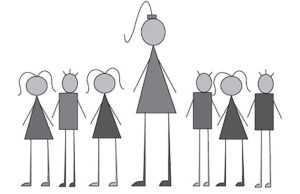Google Pixel hits the market
Google released their newest smartphone, the Pixel, on Oct. 4. With several new features, it is a step up from past Android products. The Pixel is the first smartphone designed completely by Google, software and hardware alike.
The Pixel comes with Google Assistant, an artificial intelligence software that allows you to stay on top of your schedule, and enables the user to use most of the phone’s features purely through voice control.
The standard phone is 5 inches diagonally ($649) and the XL is 5.5 inches ($769), which is the same as the iPhone 7. The Pixel competes directly with the iPhone 7 with the same price, targeting the same potential users. Furthermore, there are several similarities between the phones. For example, the case is almost the same, the only difference being the fingerprint sensor on the back. However, there isn’t a home button on the Pixel: Instead, it is on the screen itself.
The phone comes in a choice of 32GB or 128GB in Quite Black, Very Silver, and limited edition Really Blue. It comes with several other perks as well, offering users free unlimited storage for pictures and videos with a 12 megapixel rear facing camera and an 8 megapixel front facing camera. It has 4GB of RAM and a Qualcomm Snapdragon 821 processor. It will run Android 7.1 Nougat, the newest Android operating system.
The phone was unveiled along with a string of other new products including the Daydream, Chromecast Ultra, and the Google Home. The Daydream is the newest virtual reality device meant for casual VR users but is only compatible with the Pixel so far. Chromecast allows you to stream content from phones and laptops to the TV screen. And the Google Home is a home assistant device like the Amazon Echo, but cheaper.
Overall, the Pixel seems to be well made, having many features that are on par or better than current products of other leading brands in the market. However, it is still unknown as to how it will fare against the iPhone 7. Most Apple users have high brand loyalty and won’t switch to the Pixel. There are also other competing Android brands like the Samsung Galaxies and Android’s own Nexus. However, for virtual reality users, the Daydream might be a deal breaker. If the phone doesn’t take off at first, it most likely won’t pull in much for the company. But if it does, it has the potential to become more popular and do very well.



